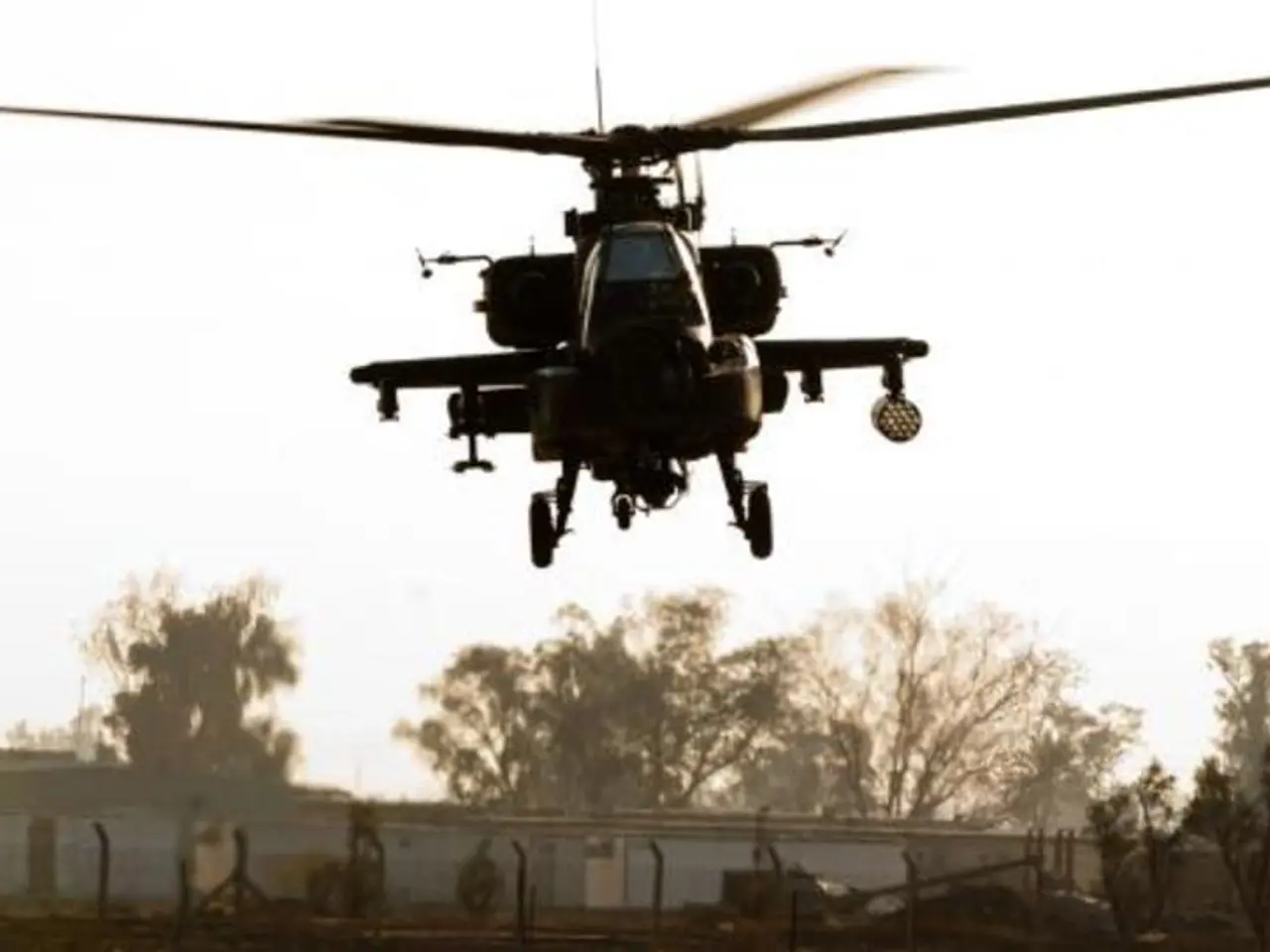Aerial combat made its way to Sindoor Operation; examining India's stance.
India is taking a multi-faceted approach to combat the growing threat of drone swarms, integrating advanced technologies and strategic deployments to ensure effective countermeasures.
Detection and Interception Technologies
India's counter-drone strategy includes the use of anti-UAV systems, drone detection radars, RF jammers, and laser-based Directed Energy Weapons (DEWs) to detect and neutralize hostile drones and swarms. The Bhargavastra counter-drone system, for instance, employs micro-missiles to destroy hostile drones, including swarms, using guided munitions. The D4 Anti-Drone system, with 360-degree radar and laser tracking, reportedly intercepts over 80% of rogue drones encountered.
Layered Air Defense Network
India's air defense integrates guns, short-range missiles, and long-range systems like the S-400 and Akash surface-to-air missiles to address different threat altitudes. However, high-flying swarm drones pose new challenges by potentially depleting missile stocks due to saturation attacks. The Akashteer command and control network provides integrated, real-time threat response and was effective during Operation Sindoor, India’s first full-spectrum drone integration across all three armed services.
Operational Deployment & Exercises
Operation Sindoor, launched in 2025, deployed layered defenses at strategic locations like high-altitude Himalayas, northeastern forests, and coastal zones for persistent surveillance and strike. This operation demonstrated India’s capability to integrate drone technology across its armed forces.
Swarm and AI Capabilities
India has developed AI-driven swarm drone systems capable of autonomous decision-making, saturation attacks, and coordinated intelligence, surveillance, and reconnaissance (ISR). These are supported by 5G battlefield networks for real-time collaborative operations. Fields and tactical units receive dedicated drone clusters for reconnaissance and electronic warfare, adopting a civil-military fusion model that accelerates adoption and adaptation of drone technologies.
Institutional Approach
India integrates commercial and domestic drones rapidly into military formations with terrain-specific customizations, forming Multi-Domain Task Forces (MDTFs) similar to US Indo-Pacific models to enhance drone-enabled deterrence and operational flexibility.
Smart Borders and Predictive Defence
AI-enabled systems including “smart” borders, using satellite data, facial recognition, motion sensors, and predictive modeling (Project Himshakti) enhance anticipatory defense against drone incursions and ground threats.
Indigenous and Collaborative Efforts
Beyond government projects, startups like ideaForge and agencies like DSRL and SDAL develop battlefield-ready drones and counter-drone technologies. India is also enhancing maritime and aerial ISR capabilities through procurement from allies, such as MQ-9B Sea Guardian drones from the US and upgrades to Israel’s Heron TP fleet.
Decoy & Honey-Net Strategy
A Decoy & Honey-Net Strategy involves deploying radio beacons emitting fake command-and-control signals to lure hostile swarms into kill-boxes, reducing risk to civilian zones.
Criminalisation and Licensing of Armed Drone Misuse
Proposed measures include criminalising and licensing armed drone misuse, amending the Unlawful Activities (Prevention) Act, 1967 to add a 7-year minimum sentence, and implementing an Aadhaar-linked drone ownership registry.
National C-UAS Grid
A national Counter-Unmanned Aerial Systems (C-UAS) Grid is proposed, integrating civil aviation radars and BSF forward-posts CCTVs into an Akashteer-like fused picture for sub-250 g drones.
Hybrid Kinetic Pods
Hybrid kinetic pods are to be co-developed with BEL for auto-fire atop metro-city police vans, linked to AI track-algorithms to avoid human latency.
Spectrum Hardened Corridors
Spectrum hardened corridors are to be created with dedicated C-UAS Electronic Warfare (EW) bands and geofenced transmit power caps, notified via the Department of Telecommunications (DoT).
Together, these layered detection, interception, AI-driven swarm management, and multi-domain task force strategies represent India’s comprehensive approach to countering increasing drone swarm threats in diverse operational environments.
- India uses anti-UAV systems, drone detection radars, RF jammers, and lasers to detect and neutralize hostile drones, showcased by the Bhargavastra and D4 Anti-Drone systems.
- India's air defense incorporates various weapons like guns, short-range missiles, and long-range systems for different threat altitudes, although high-flying swarm drones present new challenges.
- The Akashteer command and control network offers real-time integrated responses to threats as demonstrated in Operation Sindoor, India's first full-spectrum drone operation.
- India has developed AI-driven swarm drone systems capable of autonomous decision-making, saturation attacks, and coordinated ISR, supported by 5G battlefield networks.
- To integrate commercial and domestic drones into military formations, India is forming Multi-Domain Task Forces (MDTFs) similar to US Indo-Pacific models.
- AI-enabled systems like "smart" borders using satellite data, facial recognition, motion sensors, and predictive modeling enhance India's anticipatory defense against drone incursions and ground threats.
- Beyond government projects, startups like ideaForge and agencies like DSRL and SDAL develop battlefield-ready drones and counter-drone technologies for the Indian military.
- Proposed measures to address the misuse of armed drones include criminalizing and licensing them, amending the Unlawful Activities (Prevention) Act, and implementing an Aadhaar-linked drone ownership registry.




